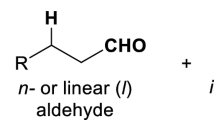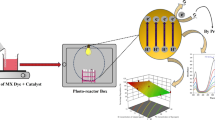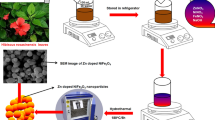Abstract
The inhibitory effect of water on the decomposition of methyl linoleate hydroperoxides (MLHP) catalyzed by Co2+ and Cu2+ was studied in a model system using proton nuclear magnetic resonance (NMR) spectroscopy. MLHP were prepared by photoxidation and purified by chromatographic methods. Proton NMR spectroscopy was used to measure reaction rates by monitoring changes in the intensity of the OOH signal. The rate constant of the reaction was obtained by plotting the natural logarithm of MLHP concentrationvs time. In the first part of the study, no transition metals were added to the model system, so that the effect of water could be attributed to the interaction between water and MLHP only. The rate constant of the reaction (K) was found inversely proportional to the concentration of water. There was a downfield chemical shift of both hydroperoxide and water peaks in the NMR spectra when water was added. As temperature increased to 40°C, the difference in K between the systems with 0% and 2% water disappeared. It is proposed that the hydroperoxides were solvated with water which retarded their decomposition. When Co2+ was added to the model system, K decreased as the concentration of water increased from 0% to 1.5%. As temperature increased from 18°C to 40°C, differences between the K for 0% and 2% water disappeared. A similar phenomenon was observed in reactions catalyzed with Cu2+. These findings would support a mechanism in which the protective effect of water involves both the solvation of OOH and hydration of the metal catalyst.
Similar content being viewed by others
Abbreviations
- acetone-d 6 :
-
fully deuterated acetone
- HPLC:
-
high-performance liquid chromatography
- K:
-
apparent rate constant
- MLHP:
-
methyl linoleate hydroperoxides
- NMR:
-
nuclear magnetic resonance
- r2 :
-
linear regression correlation coefficient
- UV:
-
ultraviolet
References
Porter, N.A., and Dussault, P.H. (1988) inFree Radicals in Synthesis and Biology (Minisci, F., ed.) pp. 407–421, Kluwer Academic Publishers, London.
Ingold, K.U. (1963) inLipids and Their Oxidation (Schultz, H.W., and Day, E.A., eds.), pp. 93–121, AVI Publishing Company, Westport.
Chan, H.W.S. (1987)Autoxidation of Unsaturated Lipids (Chan, H.W.S., ed.), pp. 1–16, Academic Press, London.
Karel, M. (1980) inAutoxidation in Food and Biological Systems (Simic, E.M., and Karel, M., eds.) pp. 191–206, Plenum Press, New York.
Barclay, L.R.C., and Ingold, K.U. (1981)J. Am. Chem. Soc. 103, 6478–6485.
Ewing, J.C., Cosgrove, J.P., Giawaiva, D.H., Church, D.F., and Pryor, W.A. (1989)Lipids 24, 609–615.
Neff, W.E., Frankel, E.N., and Miyashita, K. (1990)Lipids 25, 33–39.
Frankel, E.N., Neff, W.E., and Miyashita, K. (1990)Lipids 25, 40–47.
Miyashita, K., Frankel, E.N., Neff, W.E., and Awl, R.A. (1990)Lipids 25, 48–53.
Pryor, W.A., Prier, D.G., Lightsey, J.W., and Church, D.F. (1970) inAutoxidation in Food and Biological Systems (Simic, E.M., and Karel, M., eds.), pp. 1–16, Plenum Press, New York.
Hiatt, R. (1971) inOrganic Peroxides (Swern, D., ed.), pp. 4–40, Wiley-Interscience, New York.
Porter, N.A., Funk, M.O., Gilmore, D., Isacc, R., and Nixon, J. (1976)J. Am. Chem. Soc. 98, 6000–6005.
Porter, N.A., Lehman, L.S., Weber, B.A., and Smith, K.J. (1981),J. Am. Chem. Soc. 103, 6447–6455.
Frankel, E.N., Neff, W.E., Rohwedder, W.K., Khambay, B.P.S., Garwood, R.F., and Weedon, B.C.L. (1977)Lipids 12, 901–907.
Chan, H.W.S., and Levett, G. (1977)Lipids 12, 901–904.
Frankel, E.N., Neff, W.E., Rohwedder, W.K., Khambay, B.P.S., Garwood, R.F., and Weedon, B.C.L. (1977)Lipids 12, 1055–1061.
Kochi, J.K. (1973) inFree Radicals (Kochi, J.K., ed.) Vol. I, pp. 591–683, Wiley, New York.
Pokorny, J. (1987) inAutoxidation of Unsaturated Lipids (Chan, H.W.S., ed.) pp. 141–206, Academic Press, London.
Uri, N. (1961) inAutoxidation and Antioxidants (Lundberg, L.O., ed.) Vol. I, pp. 55–106, Interscience, New York.
Waters, W.A. (1971)J. Am. Oil Chem. Soc. 48, 427–433.
Hill, J., and McAuley, A. (1968)J. Chem Soc. (London) A 1, 169–1173.
Stevens, H.H., and Thompson, J.B. (1948)J. Am. Oil Chem. Soc. 25, 389–396.
Matz, S., McWilliams, C.S., Larsen, R.A., Mitchell Jr., J.H., McMullen, M., and Layman, B. (1955)Food Technol. 9, 276–285.
Marshall, J.B., Grant, G.A., and White, W.H. (1945)Can. J. Res. 23, 286.
Martin, M.F. (1958)J. Sci. Food Agric. 9, 817–822.
Halton, P., and Fisher, E.A. (1937)Cereal Chem. 14, 267.
Salwin, J. (1959)Food Technol. 13, 594.
Uri, N. (1956)Nature 177, 1177.
Karel, M., Labuza, T.P., and Maloney, J.F. (1966)Cryobiology 3, 1288.
Maloney, J.F., Labuza, T.P., Wallace, D.H., and Karel, M. (1966)J. Food Sci. 31, 878–884.
Labuza, T.P., Maloney, J.F., and Karel, M. (1966)J. Food Sci. 31, 885–891.
Labuza, T.P. (1975) inWater Relations of Foods (Duckworth, R.B., ed.) pp. 455–474, Academic Press, New York.
Karel, M. (1975) inWater Relations of Foods (Duckworth, R.B., ed.) pp. 435–453, Academic Press, New York.
Schenk, G.O., and Schults-Elte, K.H. (1958)Liebigs Ann. Chem. 618, 184–193.
Gardner, H.W., and Plattner, R.D. (1984)Lipids 19, 294–299.
Stahl, E. (1965) inThin-Layer Chromatography (Stahl, E., ed.) pp. 134–207, Academic Press, New York.
Gunstone, F.D., and Norris, F.A. (1983) inLipid in Food Chemistry Biochemistry and Technology, p. 48., Pergamon Press, New York.
Luck, W.A.P. (1975) inThe Hydrogen Bond (Schuster, P., Zundel, G., and Sandorfy, C., eds.) Vol. I, pp. 1370–1423, North-Holland Publishing Co., New York.
Phillips, G.S.G., and Williams, R.J.P. (1965) inInorganic Chemistry, I. Principle and Non-Metals, pp. 160–161, Oxford University Press, Oxford.
Author information
Authors and Affiliations
About this article
Cite this article
Chen, H., Lee, D.J. & Schanus, E.G. The inhibitory effect of water on the Co2+ and Cu2+ catalyzed decomposition of methyl linoleate hydroperoxides. Lipids 27, 234–239 (1992). https://doi.org/10.1007/BF02536184
Received:
Revised:
Accepted:
Issue Date:
DOI: https://doi.org/10.1007/BF02536184




